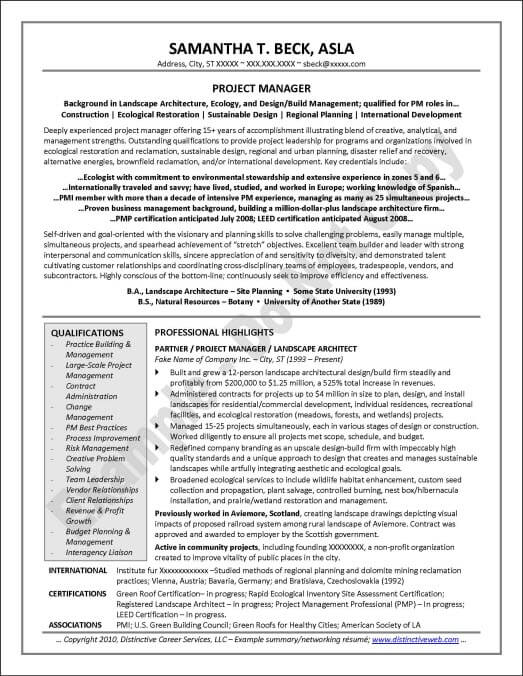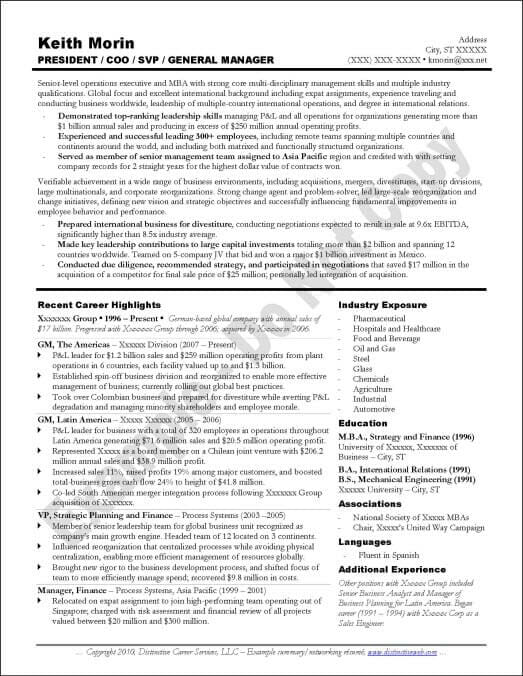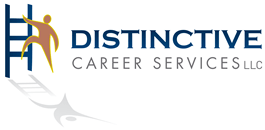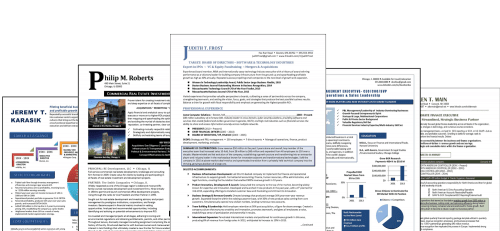TEXT-BASED TRADITIONAL NETWORKING RESUME EXAMPLES


See Examples of the Difference a Professional Resume Can Make
Project Brief
A networking resume is a document that is useful to have and use in addition to your full resume. The examples on this page are in the traditional style rather than the more modern infographic style.
A one-page resume (known as a networking or summary resume) can be useful in some situations…especially at networking meetings. While this summary document wouldn’t take the place of your more complete resume, it is an important “tool” to have in your career marketing portfolio, to use as a leave-behind at interviews, or to hand out when a more lengthy resume might be awkward. Some people include them as a PDF download available on their LinkedIn profile. Of course, if your full resume is only one page, there is no need for a separate one-page summary. These documents are primarily used by executives and experienced professionals who are using a longer 2-3 page resume.
As you can see from these example networking resumes, they are similar to a full-length resume but distilled down to the most essential key points. A key difference is in how you use this document; your networking resume will almost always be handed to a recipient in person. Unlike a traditional resume which will almost always be “read” into an applicant tracking system (ATS), there is no need to worry about ATS compatibility. This means you have lots of design freedom to use columns and tables and other elements that you must be cautious about in your full resume.
While infographic value profiles have largely taken the place of networking resumes, these more traditionally styled documents are still useful if you prefer a more conservative appearance.




